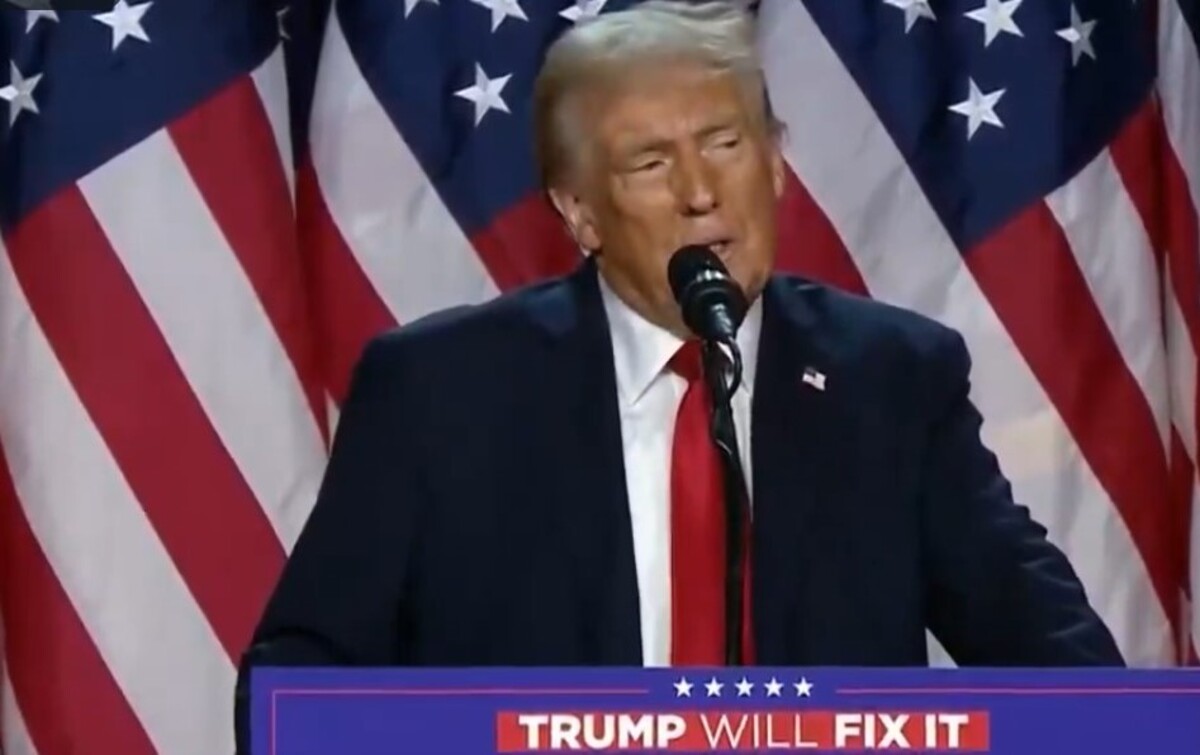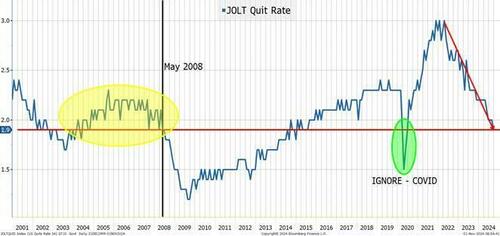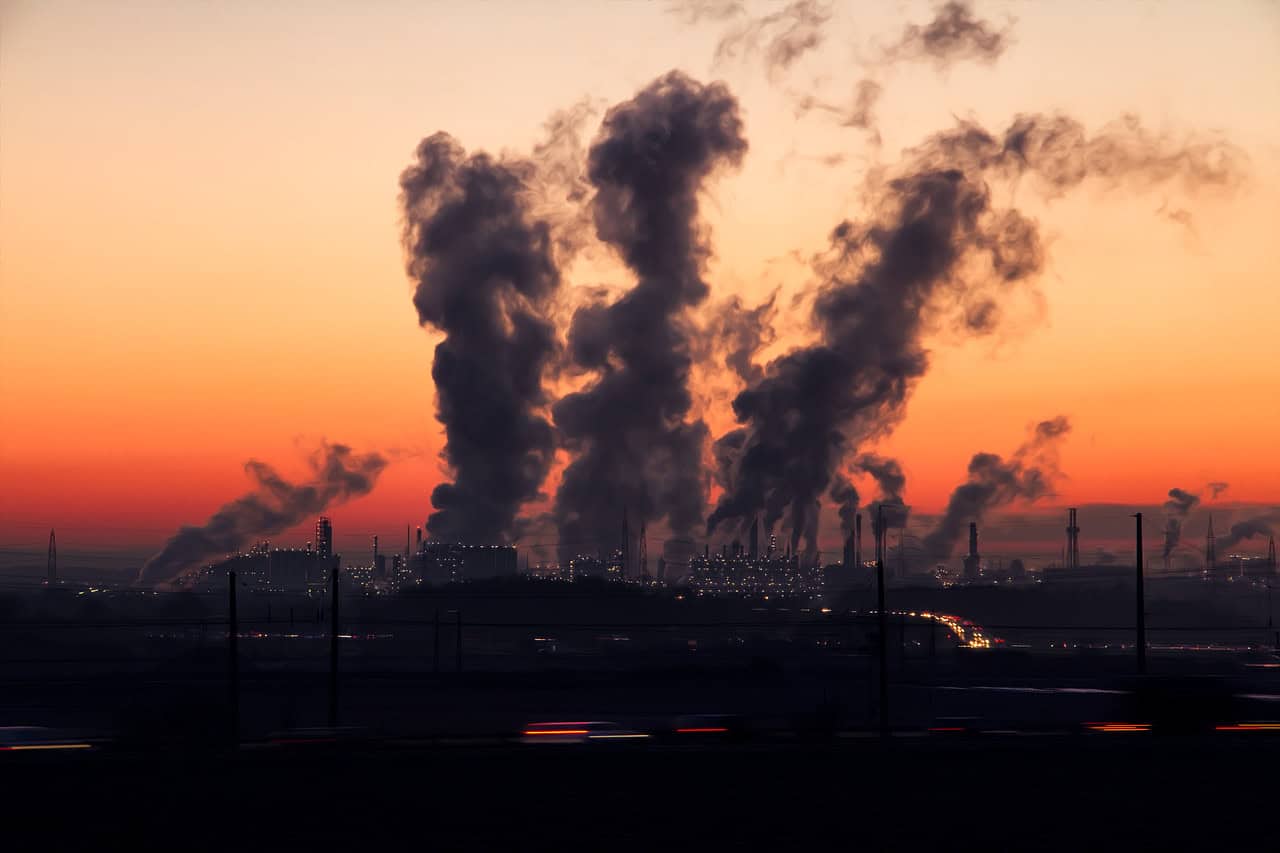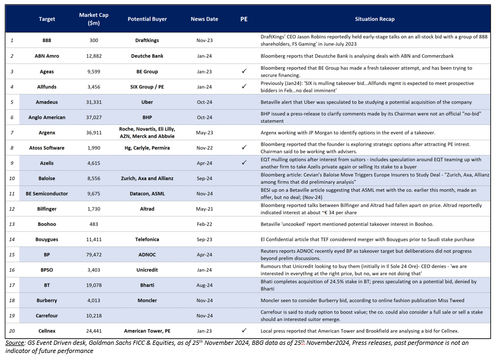VIDEO: ‘Trump Dance’ Celebrations Explode Across the NFL: Lions, Titans, Raiders, 49ers Join In
The “Trump Dance” appears to be exploding across the NFL. It started with the 49ers’ Nick Boas last week, who celebrated sacking the Dolphins quarterback by performing a little Donald Trump dance. But now, players on three other teams have
The post VIDEO: ‘Trump Dance’ Celebrations Explode Across the NFL: Lions, Titans, Raiders, 49ers Join In appeared first on Breitbart.
UK approves record number of asylum seekers claiming to face LGBTQIA+ persecution in their home countries
“While it’s impossible to be sure of the genuineness of applicants claiming asylum based on their sexuality, there are too many examples of our being too ready to give the benefit of the doubt.”
Zelensky says war will come to a ‘faster’ end under Trump’s leadership
“This is the kind of America that Europe needs. And a strong Europe is what America needs, to my mind.”
Trump meets PGA boss and Saudi PIF head amid deal talks: report
US President-elect Donald Trump has met with PGA Tour commissioner Jay Monahan and Saudi Public Investment Fund boss Yasir Al-Rumayyan, leaders of the two sides deadlocked in talks over bridging the divide in men’s golf. The Washington Post reported on Sunday that Trump, who has hosted PGA Tour and Saudi-backed LIV Golf events on his courses, played […]
The post Trump meets PGA boss and Saudi PIF head amid deal talks: report appeared first on Insider Paper.
The Revolution of 2024
by Jeffrey Tucker, Brownstone: People are out and about, smiling at each other. It’s been true since the morning after the election, the results of which defied every prediction. Who doesn’t like to see the smug elites who have ruled the world for five awful years taken down a peg? More than that, there are […]
3D Chess Or 52-Card Pickup
3D Chess Or 52-Card Pickup
By Peter Tchir of Academy Securities
3D Chess or 52-Card Pickup?
3D Chess always makes me think of Star Trek and wonder who the heck thinks that we need a game more complex than chess? 52-Card Pickup is a game most frequently played by siblings, and even then, only once or twice. Typically, the older sibling asks the younger one if they want to play 52-card pickup. Without knowing the game, but excited that their older sibling wants to do anything with them, the younger one instantly agrees. At which point the older sibling throws a deck of cards across the room and yells – there you go, 52-card pickup!
Depending on who you listen to, talk to, or follow, in its first full week, the Trump team is either playing an incredible game of 3D Chess, or is playing the equivalent of 52-Card Pickup with the nation.
It is far too early to say which side is right, and the final answer will likely fall somewhere in the middle. Having said that, there are a few things that have come up consistently in meetings, calls, and interactions with clients.
-
There are various processes in place to effectively protect the system. Could they be bypassed by using Recess Appointments? I have to admit that Congress getting recess, like schoolchildren, has always amused me, but recess appointments would be a very aggressive tactic. They allow Trump to bypass the confirmation process (for up to a year) for some positions, presumably the most difficult/contentious ones. For some reason, this is also “part of the system and process,” so someone must have thought that there was a need for this. To me, this, like many things (including the 2+ month timeframe between the election and the inauguration) is likely a function of how difficult it was to travel across the country back in the day. It will be interesting to see how the appointments go, to say the least.
-
If you are going to try to radically change D.C., often described as “draining the swamp,” it does make sense that non-traditional candidates would be selected. Yes, there are people with more experience than some of the nominees, but are they too close to the system to try and change it?
-
D.O.G.E (the Department of Government Efficiency) has generated a lot of buzz. It seems to be the one thing that everyone is curious about and wants to see how it all plays out (even with a tinge of optimism that some spending can be cut without reducing or hurting services). It is also quite clear that Musk, one of the richest people on the planet, will play a major role in this administration, as a key advisor to President-Elect Trump.
Thinking about this dovetails well with last weekend’s Learning to Speak Trump Again. For better or worse, we should expect D.C. headlines to continue to create volatility for the markets.
Having said that:
-
The 10-year Treasury is back to 4.44%, basically where it closed on November 7th. We’ve had some pretty big swings on a daily and even intraday basis, but wound up unchanged. I remain firmly in the camp that the deficit fears (and concerns about inflation from tariffs) are more than priced in right now.
-
The S&P 500 and Nasdaq 100 are both below where they closed on November 7th (for all the “growth” hype, that certainly grabs your attention). Maybe even more surprising, given the attention, is that the Russell 2000 is back to below its November 7th close, having dropped over 5% since it hit a high on Monday (maybe a good reminder that equity markets should shut down along with the bond market on Veterans Day).
-
Gold was strong into the election, but has faded hard since then. Copper, which should benefit from growth if the “Dr. Copper” people are correct, is down over 12% since the start of the month. Oil has struggled, but energy stocks have done well, with XLE holding onto its gains. This makes some sense (see “Drill Baby Drill” from Fox Business this summer) as energy production should increase, helping to keep energy prices at bay, but creating some potentially strong profit growth.
-
Bitcoin. Bitcoin has been incredibly strong. Yes, some volatility, but it has clung to the idea that a Trump administration will be very positive for crypto in general and Bitcoin (and Dogecoin) in particular. Given how many of the people in Trump’s inner circle are very positive on Bitcoin, it makes sense. On the other hand, Trump doesn’t control Bitcoin at all, and he does seem to like to control things, which may tarnish his current love affair over time. Also, for all the chatter about the U.S. government building up a “Bitcoin reserve” (it is hard to miss it, if you spend any time at all on X), I have not heard from anyone that this is really feasible. Most, which includes me, think that there will be an immense amount of resistance to government adoption (yes on clearer and helpful rules and regulations, but no on adoption by the government). You cannot fight this rally right now and maybe it is 3D Chess being played out, but it has the smell of 52-Card Pickup to me.
-
Many of the Commercial Real Estate ETFs have done poorly. In some cases, they are much closer to their annual lows than highs, even as stocks in general perform well. I think that this is actually a very interesting opportunity as yield fears are overdone, and Work From Home is really going to struggle next year. More and more companies are limiting work from home as they push for a return to the office. That momentum feeds on itself. Many who were afraid to push for work from office will be emboldened. I cannot see a world where the Department of Government Efficiency (I’m not sure it is an actual department, but that doesn’t really matter given the attention that it’s getting) won’t be looking at getting more government workers back into the office. Everyone has focused on the potential for layoffs dragging down D.C.-focused real estate valuations, but I think that net/net over time, it will turn out to be good for D.C. commercial real estate. I see CRE as where I have the biggest difference of opinion with consensus views right now.
One Chart That I Cannot Stop Thinking About
We included this chart in our NFP reaction, but I feel a sense of urgency to highlight it again. Maybe this is our attempt to play 3D Chess, or maybe we are getting ourselves overly wound up about a non-event. Since we often discuss how dubious the Jobs Available calculation is for the JOLTS report, it may seem weird that the QUIT rate, from that same report, has grabbed our attention. My take on the QUIT rate is that it is “crowd sourced” data. Every individual has a pretty good idea about their own job prospects and that gets reflected in the QUIT rate.
During the financial crisis, the QUIT rate didn’t get this low until May 2008. If I remember correctly, we technically were not in a recession at the time, and only later did the powers that be declare that we actually were in a recession. That fits with my view that this rate is important and may have a predictive element to it.
I certainly think that when anyone and everyone felt like they could quit and get a better job, it was extremely difficult for management to take away work from home. I suspect that plans to offer severance packages to reduce the workforce voluntarily (one idea floated around by DOGE) won’t be that effective when workers don’t see outside opportunities readily available (that is my interpretation of the QUIT rate).
If we see a lot of progress made on the “Make America Great” front, this could change abruptly. There might be plenty of new jobs created. There might be jobs that were being done by undocumented workers becoming available. A lot could happen, but so far, I think the outlook on jobs is following the same path as stocks – initial jubilation has turned into a wariness about what might actually be achievable, let alone accomplished.
Bottom Line
Expect more volatility. We are going to get headlines and announcements that are difficult to interpret. What do they really mean? How likely is it to get accomplished? We know this administration is looking for CHANGE, but exactly what type of change they want is still a bit unclear in many areas. What they can achieve is even more unclear.
There is a clear sense of “urgency” as I cannot recollect any other election winner coming out so quickly with so many announcements!
I think we want to “fade” growth. We can buy dips in Treasuries and sell rips in stocks.
Maybe we will get a clearer picture, but I suspect in the coming days and weeks, the market will have more questions than answers. The fact that the original reaction to the election was so strong (with so many shorts being taken out, and so many newly minted bulls emerging) leaves us with potentially treacherous positioning. While legend has it that Wall Street likes to Climb a Wall of Worry, I don’t think it likes the current level of uncertainty. Maybe it is all 3D Chess, and we are just too naïve to see the master plan, or maybe we are all seeing enough things to question how effective this master plan will be?
While I like being overweight duration and underweight equities, I would not be a very aggressive overweight or underweight. It is more of an attempt to trade the volatility that is likely to continue.
On Bitcoin, if I hear one more $1 million price target, my head might explode, but for now, I can’t think of what will slow this down given the team around Trump, but then again, Trump himself might say something showing that he has had a change of heart (which is what I suspect will happen, but it seems too early for that to occur).
I did not focus on inflation, jobs, or other economic data (except to highlight the QUIT rate). I think that the data of the past few months will likely be irrelevant early next year as policies become clear and we can focus on what those policies will do to the economic data, and not worry about economic data that probably reflects a set of policies that will no longer be relevant.
We do get the most important earnings report for the AI story this week. Everything seems rosy in the space, but it is increasingly difficult to guess what has already been priced in.
Good luck and don’t stray too far from the desk, because you never know what headline might come out next! If you missed our Around the World Podcast from earlier in the week, it is a good listen.
Tyler Durden
Sun, 11/17/2024 – 17:30
Michael Moore Says Electing Trump Part of America’s ‘List of Evil Deeds’: ‘We Are Not a Good People’
Radial, left-wing documentary filmmaker Michael Moore has denounced Americans and is insisting we are “not a good people” in the wake of Donald Trump’s landslide victory.
The post Michael Moore Says Electing Trump Part of America’s ‘List of Evil Deeds’: ‘We Are Not a Good People’ appeared first on Breitbart.
US says its climate financing reached $11 bn this year
President Joe Biden is using a historic trip to the Amazon on Sunday to highlight that US bilateral climate financing increased to $11 billion this year, meeting a pledge he made. “The fight against climate change has been a defining cause of President Biden’s leadership and presidency,” the White House said in a statement ahead […]
The post US says its climate financing reached $11 bn this year appeared first on Insider Paper.
G7 Vows To Keep Imposing ‘Severe Costs’ On Russia As War Reaches 1,000 Days
G7 Vows To Keep Imposing ‘Severe Costs’ On Russia As War Reaches 1,000 Days
Leaders of the Group of Seven (G7) have issued a Saturday statement vowing to support Ukraine as long as it takes to defeat Russia, vowing to impose severe costs on Moscow, in line with prior Washington statements vowing to ‘weaken’ Russia.
This comes amid growing Western behind the scenes action to engage Putin on the diplomatic front, in response to President-elect Donald Trump preparing to enter the White House, where a top priority is to negotiate a swift end to the war in Ukraine. This coming Tuesday will mark 1,000 days since Russia’s full-scale invasion in February 2022.
“Russia remains the sole obstacle to just and lasting peace,” the new joint statement says. It pledges to support more measures “in support of Kyiv as the thousandth day of Russia’s war of aggression against Ukraine approaches.”
The group major industrial countries consists of the US, France, Canada, Germany, Italy, Japan, and the UK. Currently Italy holds to the rotating presidency.
“The G7 confirms its commitment to imposing severe costs on Russia through sanctions, export controls and other effective measures. We stand united with Ukraine,” the statement added.
The European Union is a ‘non-enumerated’ member of the G7. The European Commission’s chief Ursula von der Leyen issued a simultaneous statement on X saying the “G7 reiterates its unflinching support to Ukraine.”
As we are nearing the 1000th day of Russia’s full-blown war, the G7 reiterates its unflinching support to Ukraine.
We’re committed to continue imposing severe costs on Russia through sanctions, export controls & other measures.
G7 partners stand with the brave Ukrainian nation.
— Ursula von der Leyen (@vonderleyen) November 16, 2024
“G7 partners stand with the brave Ukrainian nation,” von der Leyen concluded, at a moment there is widespread recognition that Russia is steadily advancing in the east, and will soon solidify control over the whole of the Donbass.
On the nuclear front, the Pentagon has issued a more measured and somewhat conciliatory statement in a report to Congress:
“The United States will abide by the central limits of the New START Treaty for the duration of the Treaty as long as it assesses that Russia continues to do so,” the Pentagon said in the report on the nuclear weapons employment strategy of the United States.
The US is also committed to future arms control with its nuclear-armed competitors, but any future accords will “need to account for US deterrence requirements and other strategic threats globally,” the report said.
Since Trump’s election the ratcheting nuclear rhetoric and warnings from the Russian side appear to have cooled. A key rationale of Trump’s team in making the case for a necessary and quick winding down of the war is that the West must avoid nuclear confrontation or a WW3 scenario with Russia at all costs.
War-weary populations across Europe and the West are also in favor of peace, all recent polling shows, and Trump has been given a clear mandate by US voters to seek a diplomatic end to the war.
President Zelensky has also admitted this past week that the war will likely end sooner under Trump. He is pressing for a “just peace” – but is unlikely to assent to anything without firm security guarantees from NATO countries. Still, Zelensky is warning allies not to appease Putin by hasty engagement on the diplomatic front. “What is needed are concrete, strong actions that will force him to peace, not persuasion and attempts at appeasement, which he sees as a sign of weakness and uses to his advantage,” a statement from Zelensky’s office said Friday.
Tyler Durden
Sun, 11/17/2024 – 07:35
Russia Signals Openness to Ukraine Peace Talks Under Trump, Says Must Reflect ‘Realities on the Ground’
from Your News: Moscow expresses readiness for negotiations to end the Ukraine conflict if U.S. President-elect Donald Trump initiates the process, but insists talks must reflect “realities on the ground.” By yourNEWS Media Newsroom In the wake of President-elect Donald Trump’s landslide victory, Moscow has indicated its willingness to engage in peace negotiations over the […]















